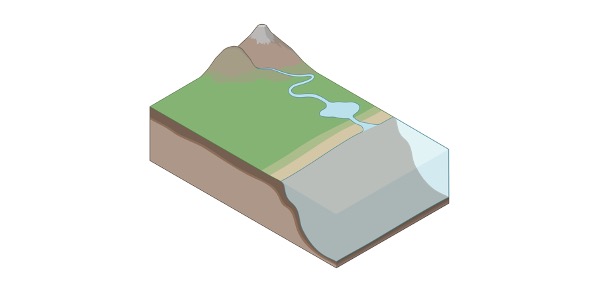Table of Contents
What is Ecological Succession?
The ecological process that characterizes the different stages and alterations to an ecosystem or different species is termed ecological succession by botanists. This concept emerged from the need to analyze and understand the evolution of complex ecosystems like forests that can occur in recently formed places like a volcano.
Different stages can be witnessed during the process of succession that show the developmental stage the community or ecosystem is at. The final stage of this succession is the climax where a complex community structure can be seen.
At this stage, there is efficient utilization of resources, and the total mass of vegetation maxes out. Climax communities are relatively stable and are not easily disturbed.
Types of Ecological Succession
i. Primary Succession
On the primordial earth, there was no soil. Coldwater and hot magma formed hard rocks as seen in the case of newly formed islands. In the primary succession, the process of erosion is facilitated by some small organisms leading to the formation of soil from erosion of rocks. This soil is fundamental for the growth of other higher plant life forms.
These plants attract animals and other organisms that then populate the region. Like this from a barren land the succession proceeds to become a stable community. After many years the soil layers increase in thickness that provides a habitat for various microbes that provide essential nutrients required for higher plant life. If this community formed by primary succession is destroyed, then secondary succession takes place.
ii. Secondary Succession
The climax community formed as a result of primary succession may be destroyed by natural calamities or man-made disasters. The surviving community undergoes secondary succession that is faster compared with the primary one as soil and some organisms are already present.
Small plants will harbor the site first and will create a vegetation layer, larger plants will establish themselves. Small shrubs and trees will appear at the starting stages. Tress will start to dominate forming thick canopies leading to blocking of sunlight that will alter the community structure.
This will lead to a stable community that may or may not be similar to the original community. The climax species will vary depending upon which species colonized the area and which plants thrived.
iii. Cyclic Succession
It occurs within established communities such that the structure is altered in a periodic cyclic manner. Certain plants stay dormant for some time of the year and thrive at the rest of the time. There are also organisms like cicadas that remain dormant for long period then drastically alter the ecosystem when they emerge.
Examples of Ecological Succession
i. Acadia National Park Ecological Succession
This park in Maine was destroyed by a raging wildfire in 1947. About 10,000 acres of this park suffered that si nearly 20% of its size. Some thought that the park might be gone forever. No interventions for restorations were done, instead, they let the natural process work.
No great changes could be seen in the first few years as only certain small plants colonized the area having burnt soil. But after many years a rich diversity of trees could be observed, deciduous forest developed. The previous landscape before the fire was dominated by evergreen trees. This example shows the effect of secondary succession on land.
ii. Coral Reef Ecological Succession
Ecological succession involves both the flora and fauna of that particular land. Hence, this term is not limited to only plant communities. As the same pattern could be observed in the animal population after they are disrupted. An example of this can be the coral reef ecosystem that is formed after many years of succession.
Colonization of rocks by small coral polyps occurs in primary succession. The growth and division of these polyps lead to the formation of coral colonies that attract crustaceans and small fishes that are on the hunt for shelter. The presence of small fishes will in turn attract large fishes.
Thus, ultimately a coral reef will form that is fully functional. Though the concept of succession emerged first in plants, their principles can be applied to all ecosystems that are established.
Ecological Succession Citations
- Ecological succession: out of the ash. Curr Biol . 2005 Nov 22;15(22):R926-7.
- REWRITING ECOLOGICAL SUCCESSION HISTORY: DID CARRION ECOLOGISTS GET THERE FIRST? Q Rev Biol . 2015 Mar;90(1):45-66.
- Ecological Succession of Polymicrobial Communities in the Cystic Fibrosis Airways. mSystems . 2020 Dec 1;5(6):e00809-20.







